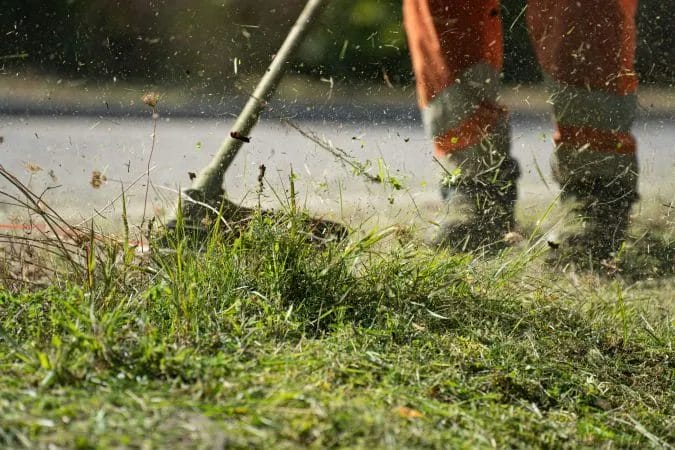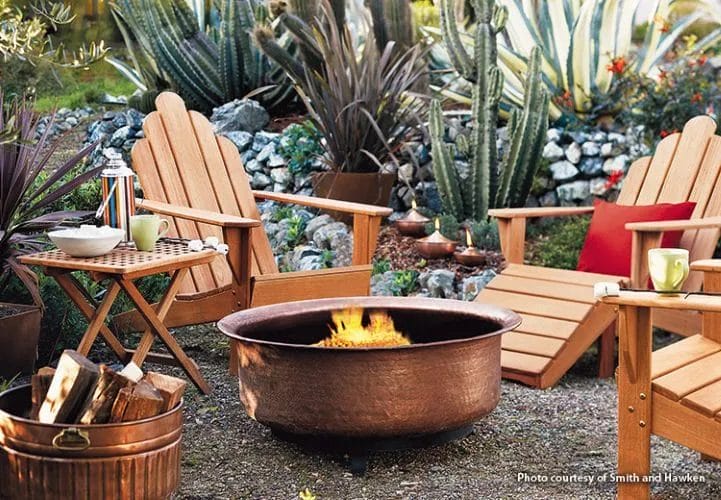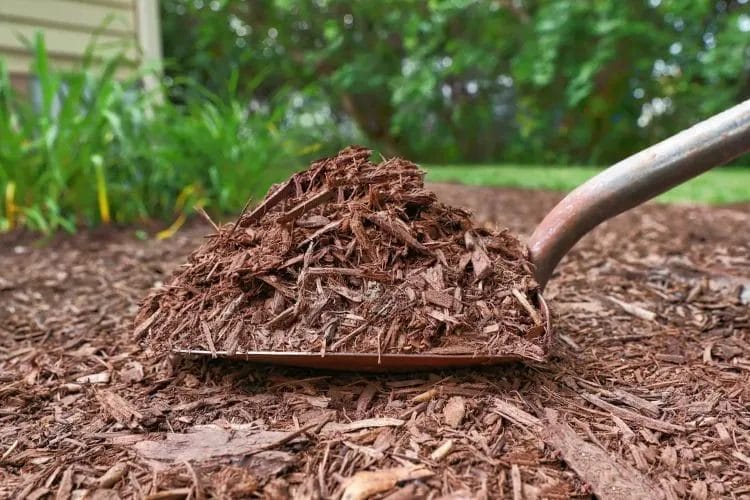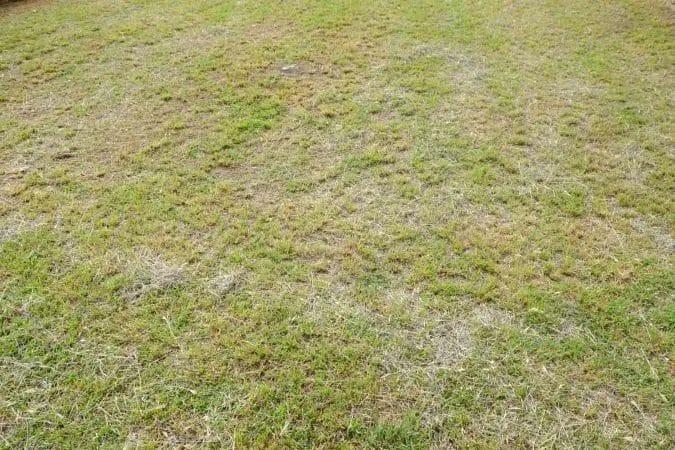
Over time, your lawn edges shape the look and health of your yard, and this guide shows you how to select, install, and maintain edging with confidence; you’ll learn practical techniques and when to call professionals like Smith Brothers Services, Smith Brothers Landscape, or Smith Brothers Tree Services for related trees services and seasonal care so you can keep your borders sharp and low-maintenance.
The Art and Science of Lawn Edging
Your choice of material, depth and profile dictates both longevity and appearance: 12‑gauge steel buried 3–4 inches gives a razor‑sharp line, while concrete curbing 4–6 inches high creates a permanent boundary for driveways and beds. Smith Brothers Services and Smith Brothers Landscape, often coordinating with Smith Brothers Tree Services and their trees services team, recommend matching edge profiles to maintenance routines—low, hidden edges for low‑maintenance turf, taller visible edges where you want a formal, sculpted look.
How Edging Shapes the Aesthetic of Your Lawn
Curved beds soften property lines and guide sightlines, whereas straight, orthogonal edges convey formality and can visually widen narrow yards; a 3–6 inch reveal is typical for a manicured suburban lawn. You’ll notice that repeating a consistent edge type—steel for borders, pavers for pathways—ties disparate areas together, an approach Smith Brothers Landscape, uses on many renovation projects to boost curb appeal without increasing maintenance time.
The Role of Lawn Edging in Healthy Grass Growth
Edging creates a physical barrier that limits stolon and rhizome spread, keeps mulch and soil amendments out of the turf, and reduces mower scalping by defining a clear cut line; most installers set edges 3–6 inches deep and 2–4 inches wide to balance root health with containment. Smith Brothers Services reports fewer encroachment issues on properties where defined edging is inspected annually.
For trees and larger plantings you’ll want deeper solutions: Smith Brothers Tree Services often installs root barriers 18–24 inches deep when beds sit adjacent to mature oaks or maples to redirect roots and protect irrigation lines. Proper edging also helps water move laterally away from beds, so you avoid chronic waterlogging at the lawn edge; in practice, combining a 4‑inch steel edge with a 2–3 inch soil grade drop reduces turf dieback and limits weed incursion along beds. Regular inspection, especially after heavy rain or frost, keeps edges functioning as intended.
Materials and Tools: Choosing the Right Gear
Pick materials and tools that match your yard’s design, soil and your maintenance plan: metal edges give a razor-sharp line for high-traffic lawns, while brick or pavers add permanence for formal beds. You can rent heavy items or get advice from Smith Brothers Services or Smith Brothers Landscape, and Smith Brothers Tree Services can advise where roots from large trees affect edging performance. Factor lifespan (5–50+ years), upfront cost, and how often you’ll perform upkeep before deciding.
Analyzing the Pros and Cons of Popular Edging Materials
Compare lifespan, cost, install effort and maintenance for each option so you choose what fits your budget and maintenance cadence.
Pros and Cons by material
| Material | Pros / Cons |
|---|---|
| Galvanized Steel | Pro: lasts 20–30+ years, thin profile for clean cut; Con: can rust at cut edges and may dent under impact |
| Aluminum | Pro: rust-resistant, lightweight and flexible; Con: can bend under heavy loads, typically 10–20 year life |
| Plastic / Resin | Pro: low cost ($1–5/ft), easy DIY install; Con: UV degradation, warping, often 5–15 year lifespan |
| Brick / Pavers | Pro: 50+ year durability, aesthetic versatility; Con: higher install labor and cost, requires a compacted base |
| Concrete (curb) | Pro: extremely durable, permanent look; Con: most expensive, hard to modify once set |
| Timber (treated) | Pro: natural appearance, easy to cut and fit; Con: rot over 5–20 years depending on grade and moisture |
| Rubber (recycled) | Pro: flexible, good for curved beds, recyclable; Con: can fade, mid-range lifespan 10–20 years |
| Living Edging (plants) | Pro: soft, ecological barrier, can stabilize soil; Con: requires ongoing pruning and replacement, slower to establish |
| Concrete Pavers (modular) | Pro: easier to repair than poured concrete, long-lasting; Con: individual pavers can settle if base not prepared |
Essential Tools for DIY Lawn Edging Success
Start with a half-moon edging tool or a flat spade for manual cuts, a string trimmer for finish trimming, a powered rotary edger for long runs, and a turf knife for detail work; add a rubber mallet, stakes, measuring tape and safety gear. You’ll save time renting a power edger from Smith Brothers Services or consulting Smith Brothers Landscape for tool selection when root interference from nearby trees requires input from Smith Brothers Tree Services or trees services pros.
Dive deeper into tool specs: use a half-moon edger with a 6–8″ blade for 3–4″ deep cuts on soft soil, and choose a gas or battery rotary edger with at least 40–60V equivalent for yards over 1/4 acre. Look for hardened steel blades, vibration-dampening handles (Fiskars-style IsoCore), and replaceable blades; a straight edging spade gives the cleanest vertical face if you prefer manual precision over machines.
Step-by-Step Techniques for Perfect Lawn Edges
Quick comparison of common edging methods
| Technique | When to use / Tips |
|---|---|
| String line + spade | Best for straight runs; mark line, cut 4–6 in deep, remove 2–3 in sod strip, bevel toward turf for clean look. |
| Half-moon & edging shovel | Great for curves and beds; work in 3–5 ft sections to keep consistent radius and 2–3 in soil setback. |
| Walk-behind power edger | Quick for long, straight borders—typical blade 8–12 in, cut depth 2–3 in per pass; wear goggles and check irrigation lines. |
| Mini trencher / trenching shovel | Use for installing metal/plastic edging or irrigation; cut 4–8 in trench, compact backfill to prevent washout. |
Traditional Techniques: String Lines and Spades
You set a taut string to define the line, then use a sharp half-moon spade to cut a 4–6 inch deep, 2–3 inch wide strip of turf; pry out the sod and bevel the soil toward the lawn for a sharp shadow line. You’ll find crews at Smith Brothers Landscape, for example, break projects into 10–15 ft sections to keep edges uniform, and you should keep the spade vertical for straight edges and angled slightly for softer, curving beds.
Modern Methods: Power Edgers and Trenchers
You can speed up work dramatically with a walk-behind power edger—typical commercial units use 8–12 inch blades and cut 2–3 inches deep per pass, letting you finish 100–200 ft in under an hour on most lawns. Trenchers create 4–8 inch trenches for metal or plastic edging and reduce hand-digging by up to 70% on larger jobs; crews from Smith Brothers Services routinely pair a trencher with immediate compaction to avoid future settling, while Smith Brothers Tree Services flags trees and utilities before starting to protect roots and lines.
Modern equipment demands a disciplined approach: check soil moisture (slightly damp soils cut cleaner), walk at a steady pace to avoid overcutting, and mark buried utilities before trenching—mini-trenchers are ideal for 4–6 inch profiles where irrigation lines are tight. You can replicate practices used by Smith Brothers Landscape, which typically sets steel edging at 6–8 inch depths for high-traffic beds and uses polymer caps to prevent corrosion; for heavy root zones, coordinate with Smith Brothers Tree Services to limit root damage while maintaining crisp edges.
Creative Finishing Touches: Landscaping with Edging
Sharp edges transform a finished lawn into a designed landscape: 4–6 inch steel or aluminum edging set 6 inches deep gives a crisp turf-to-bed line, while 1–2 inch-high paver bands create walking edges. You can mix materials—gravel channels next to corten-steel beds—to control runoff and define sightlines. For larger installs or tricky grading near slopes, consult Smith Brothers Services to size profiles and ensure long-term stability without damaging irrigation or utility lines.
Integrating Edging with Plants and Flowers
Place edging 4–6 inches from perennial crowns and 12–18 inches from shrub drip lines to allow mulching and maintenance access; for trees, keep edging at least 6–12 inches from trunks to prevent bark damage and compaction, and call Smith Brothers Tree Services or other trees services for root-sensitive work. Use a 3–4 inch mulch layer behind the edge and install root barriers for aggressive groundcovers like mint or vinca, so your beds stay neat and plants don’t creep over the border.
Innovative Designs That Elevate Your Yard’s Appeal
Alternating 12-inch paver strips with 18-inch turf bands creates modern rhythm, while scalloped steel edges every 12–18 inches add soft geometry for cottage beds; corten-steel planters, raised 6–8 inches, introduce height and a warming patina within seasons. Smith Brothers Landscape can help mock up layouts to scale, test sightlines, and recommend material pairings that hold up under seasonal freeze–thaw cycles.
For a bolder statement, combine materials and function: install a 6-inch-deep concrete edge along driveways, then transition to 4-inch steel for beds, using a 6–8 inch gravel buffer to improve drainage. Curved edges placed on 8–10 foot radii reduce mowing time by eliminating awkward turns, while alternating materials—flagstone stepping areas every 24 inches through a low-maintenance sedge lawn—cuts maintenance and raises curb appeal. Smith Brothers Services and Smith Brothers Landscape often coordinate with Smith Brothers Tree Services on projects near mature trees to avoid root conflicts and ensure your design lasts with minimal upkeep.
Maintenance Mastery: Keeping Your Edges Sharp
Edge every 4–8 weeks during active growth, sharpen blades after about 8–10 hours of use, and inspect metal edging for bends or rust twice a year. You can expect steel or aluminum edging to last 15–25 years with proper anchoring, while most plastic systems warp within 3–5 years. Schedule quarterly tune-ups with Smith Brothers Services or Smith Brothers Landscape to catch small problems early, and involve Smith Brothers Tree Services when roots threaten borders in “trees services” areas.
Seasonal Care: When to Refresh Your Edges
Plan major refreshes in early spring (April) after frost heave and again in early fall (September–October) to correct summer creep; perform light touch-ups every 6–8 weeks through the season. For winter-damaged edges remove 2–3 inches of turf, regrade and compact the trench before resetting edging. You should avoid heavy trenching during drought or extreme heat to prevent turf stress, and lean on Smith Brothers Landscape for timed seasonal resets that match your lawn’s growth cycle.
Common Pitfalls to Avoid for Long-lasting Edging
Setting edging too shallow, using low-quality plastic, and leaving a soil berm against the edge are common causes of failure that invite turf encroachment. You should install permanent steel edging 6–8 inches deep with a 1–2 inch exposed reveal, avoid trenching within 6 inches of tree trunks, and secure edges with corrosion-resistant stakes. Smith Brothers Tree Services can assess root conflicts, and Smith Brothers Services offers audits to catch these mistakes early.
Misapplied edging often shows within 12–18 months: one homeowner replaced scalloped plastic twice in three years because it sat flush with the mower deck; swapping to 14-gauge steel set 6 inches deep solved the problem. Compact a 1–2 inch gravel or sand base under pavers to prevent freeze-thaw heave, use galvanized or stainless stakes to avoid rust, and limit herbicide use along margins to prevent turf thinning. You can save 20–30% by repairing strategic sections instead of full replacement—ask Smith Brothers Landscape or Smith Brothers Services for a prioritized plan.
Final Words
So you can use the complete guide to choose and maintain effective lawn edges that sharpen your garden’s look and simplify mowing; rely on proven methods from Smith Brothers Services, Smith Brothers Landscape, Smith Brothers Tree Services, and trees services expertise to match materials, tools, and planting to your site, and you will maintain crisp results year-round by scheduling routine checks and adopting the techniques that suit your budget and landscape goals.




